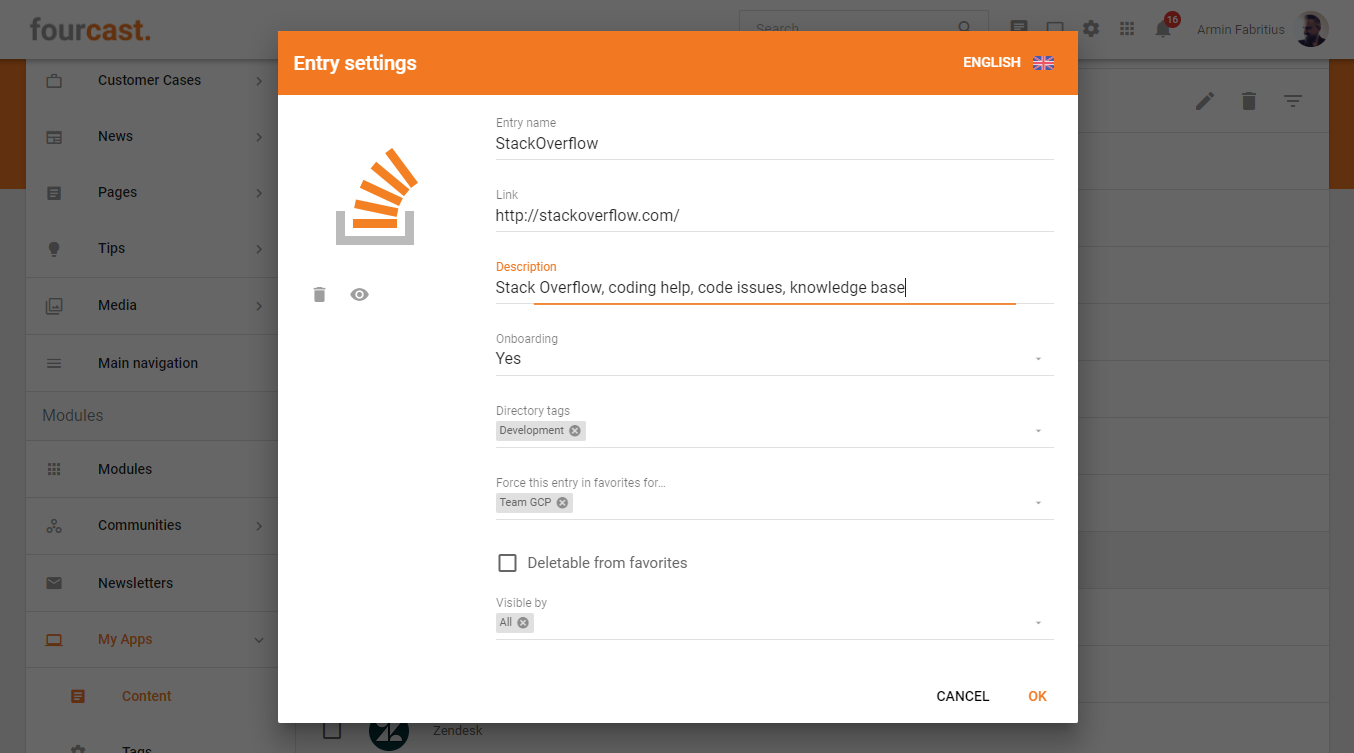Drop the word “intranet” in any corporate environment and reactions will range from “what intranet?” to “please no!” to a simple *shrugs*. Intranets are often constructed and maintained as a necessary evil, but never as something that makes your employees smile.
This results in low user engagement (it’s not everybody’s intranet), low satisfaction and usage and therefore close-to-zero budgets to bring it to the 21st century. In this blog post, we’re going to be looking at typical mistakes we see in those company intranets, and what you can do to avoid them!
Intranet Mistake #1
Building a link farm and letting it die a slow death

You build your intranet as a giant link farm. It takes you 6 months to organise & visualise those links as categories on hundreds of pages, to create structure and meaning and to create landing pages. When you finish the job, you find out half of the intranet content is not relevant to 80% of your users, and that your categorisation does not work for your employees. Because:
-
They don’t read these landing pages
-
They don’t understand your categories
-
They don’t have time to fix problem 1 and problem 2 🙂
How to avoid this intranet mistake
In your intranet, use searchable link catalogs with relevant metadata, for example tagging links with “HR” and Absence”, or “Tax”,“International Law”, “Case Studies”. Add SEO-friendly descriptions to each link and – if needed – add keywords in multiple languages.
Best tip: take it a step further and personalise the visibility of each entry in the catalog to the needs of your employees:
- which user groups in your company should see this link ?
- which user groups should have that item in their favourites by default ?
Make your new intranet as relevant as possible by personalising it for your employees in advance. Rely on metadata instead of a fixed hierarchical structure to enhance retrievability.

The LumApps intranet solution offers the possibility to create smart link catalogues and to personalise each entry, for example by using tags and specifying target audiences to your employees see only what’s relevant to them.
Intranet Mistake #2
Letting the users customise their home page

“Why does a dog lick his private parts? Because he can.” Same goes for putting all your faith in that intranet feature that allows your employees to customise what they see on the home page. It’s not because every intranet tool has this feature that you have to use it. And it’s not because the 10% IT-geeks in the company love customising tools to make it theirs, that this will work for your other employees.
How to avoid this intranet mistake
While it’s not per se easy, it is possible to avoid this by just doing your research. Start with the users, map their needs, behavior & communication culture and personalise it for them. Don’t ask your employees to do the heavy lifting. Personalise their experience out of the box, based on user profiles and user behavior such as the fine-grained profiling of social intranet tool “LumApps”.
We call it the Zero Config Challenge: making sure the intranet tools just work, limiting user action, change communication and training.
Mistake #3
Thinking your instant messaging app will fix your internal social communication

If your company has been somewhat awake and paying attention the last 10 years, it has probably invested in instant messaging tools like Jabber, Google Hangouts and Google Chat or Yammer. Or if you’re surrounded by Tech Geeks or Sneaker Marketeers: Slack.
So what’s wrong with that?
Nothing – the mistake is in fact thinking that you have that nasty “internal communications” topic covered with chat. Which you don’t. Chat is a great tool for short-lived social communication, for fleeting messages that will no longer be relevant in a couple of hours. It’s great for 1-on-1, it’s suitable for small groups.
However, as your groups get larger and the topics wider, it is likely to become just another crowded bar where everyone is shouting at you. While all you want is just to get another beer and watch the game. As a matter of speaking 🙂
Have a look how it’s used in your company: it’s quite likely that chat does not solve raising awareness, creating interest, broadening teams’ views across silos and inspiring employees. It’s another channel that generates pings & notifications. It can be very distracting in a reply-to-all kind of way that just replicates the old email chain problem.
And don’t think there’s only 1 chat technology in use. We’ve seen companies embrace 4 or 5 different tools. To make it worse employees often revert to tools they know from their private life but aren’t used on a company level, such as Whatsapp or Facebook Messenger. If security & data privacy are your concerns, that is something you really don’t want in your IT ecosystem.
The biggest issue is however that the information that is shared in your chat rooms, channels or 1-on-1 messages does not become knowledge. It disappears. Uncared for. Unlinked. Hardly searchable. Locked in another new silo.
How to avoid this intranet mistake
There are 2 simple ways to avoid this common intranet mistake:
First: think about how you use chat, discuss with your teams and agree on how you will and will not use it. Make a charter. Police yourself. Manage the way you use chat and keep an eye out for bits & pieces that should become knowledge for the next people you are going to onboard in your team or company.
Second: look for the right tools for the job, and find a platform that may solve all these issues at once, such as LumApps social intranet. Your new platform should allow your employees to post and share bits of information on your intranet communities or WIKIs, as easily as sending a message in a chat group. With that difference of having the advantage of becoming searchable knowledge.
And don’t forget to make it crystal clear to your employees, to your channel managers and your IT architects how they should use each of those channels in a fit-for-purpose way. Plus how you can let different platforms work together by integrating them.
The bottom line
In summary, when you build your new intranet, make it smart:
- build smart link catalogs
- personalise the home page experience in advance: do the heavy lifting for your employees!
- be mindful of how chat applications are used in your company and then clearly position your social intranet as the preferred place for sharing & retrieving knowledge
Find out how we guided PwC Belgium in reimagining their internal communications with LumApps – Join our webinar on Thursday 14th of February!
Do you want to discuss your own internal communications project with us?
Get in touch with
Inês Valadas
Supporting companies with their employee experience journey ? | engagement & retention strategy ?
